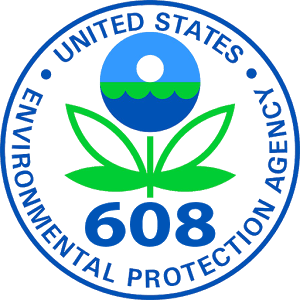
On September 18, 2018, Acting EPA Administrator Andrew Wheeler signed the proposed rule, “Protection of Stratospheric Ozone: Revisions to the Refrigerant Management Program’s Extension to Substitutes”. This action proposes to revisit the Agency’s recent approach to regulating appliances containing substitute refrigerants such as hydrofluorocarbons (HFCs) by proposing to rescind the November 18, 2016 extension of the leak repair provisions to appliances using substitute refrigerants. This proposal also requests public comment on rescinding other provisions that were extended to substitute refrigerants, namely HFC’s. This proposal would not affect the requirements for ozone-depleting refrigerants such as CFC’s or HCFC’s. If finalized as proposed, this action would rescind the leak repair and maintenance requirements at 40 CFR 82.157 for substitute refrigerants and would go back to applying only to ozone-depleting substances.
What the proposed rule would do
The EPA’s new proposed rule would rescind the following requirements for appliances with 50 or more pounds of HFCs:
- conduct leak rate calculations when refrigerant is added to an appliance,
- repair an appliance that leaks above a threshold leak rate,
- conduct verification tests on repairs,
- conduct periodic leak inspections on appliances that exceed the threshold leak rate,
- report to EPA on chronically leaking appliances,
- retrofit or retire appliances that are not repaired, and
- maintain related records.
The EPA, through this proposed rule, is requesting public comment regarding further action to rescind other provisions that were extended to HFC’s, including the following:
- Anyone purchasing refrigerant for use in an appliance or handling substitute refrigerants (e.g., air-conditioning and refrigeration service contractors and technicians) must be a Section 608-certified technician,
- Anyone removing refrigerant from a refrigeration or air-conditioning appliance must evacuate substitute refrigerant to certain level using certified refrigerant recovery equipment before servicing or disposing of the appliance,
- The final disposer (e.g., scrap recycler, landfill) of small appliances, like refrigerators and window air conditioners, must ensure and document that substituted refrigerant is recovered before final disposal, and
- All used refrigerant must be reclaimed to industry purity standards before it can be sold to another appliance owner.
This proposed rule will have a 45-day public comment period. To view the public docket in the Federal Register, visit www.regulations.gov and search for docket number EPA-HQ-OAR-2017-0629.
A Refresher: 2016 Rule Summary
On November 18th, 2016, the EPA issued a final rule updating its refrigerant management regulations. While the regulation took effect on January 1st, 2017, some provisions had compliance dates of January 1st, 2018, and January 1st, 2019. Among other things, that rule extended the refrigerant management requirements to common substitutes like hydrofluorocarbons (HFCs). The 2016 rule and the compliance dates currently remain in effect.
The 2016 rule made the following changes to the existing requirements under Section 608:
1.) Extended the requirements of the Refrigerant Management Program to cover substitute refrigerants, such as HFCs. Note that EPA has previously exempted some substitutes from the Section 608 venting prohibition through previous rules. Such substitutes are also exempt from the requirements of this rule. This fact sheet describes the requirements of the Section 608 Refrigerant Management Program.
2.) Lowered the leak rate thresholds that trigger the duty to repair refrigeration and air-conditioning equipment containing 50 or more pounds of refrigerant.
- Lowered from 35% to 30% for industrial process refrigeration (IPR)
- Lowered from 35% to 20% for commercial refrigeration equipment
- Lowered from 15% to 10% for comfort cooling equipment
3.) Required quarterly/annual leak inspections or continuous monitoring devices for refrigeration and air-conditioning equipment that have exceeded the threshold leak rate.
4.) Required owners/operators to submit reports to EPA if systems containing 50 or more pounds of refrigerant leak 125% or more of their full charge in one calendar year.
5.) Extended the sales restriction to HFCs and other non-exempt substitutes, with the exception of small cans (containing 2 pounds or less) of non-exempt substitutes (e.g., primarily HFC-134a) for motor vehicle air conditioner servicing. These small cans can continue to be sold without technician certification so long as the small cans have a self-sealing valve to reduce refrigerant releases.
6.) Required technicians to keep a record of refrigerant recovered during system disposal from systems with a charge size from 5–50 lbs.

 Recently, we’ve received questions regarding whether Dynatemp’s products require a Proposition 65 label or not. In this post, we hope to answer your questions and provide you with links to all of the Prop 65 information you may need.
Recently, we’ve received questions regarding whether Dynatemp’s products require a Proposition 65 label or not. In this post, we hope to answer your questions and provide you with links to all of the Prop 65 information you may need.